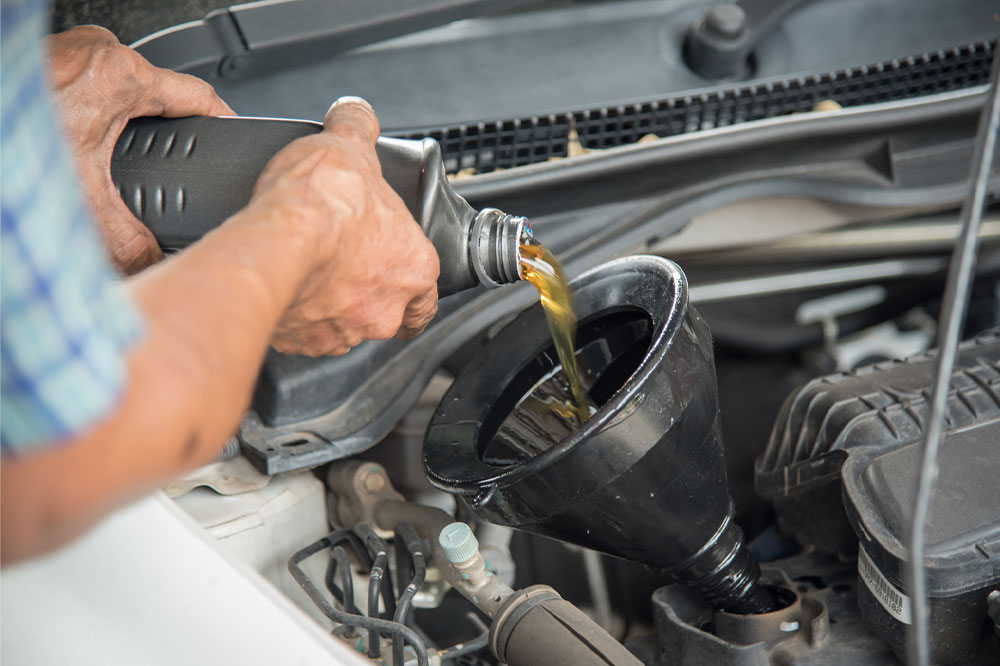18 essential car safety checks before a road trip

Road trips offer a fantastic opportunity to explore new places and create lasting memories. But before embarking on the journey, it’s crucial to inspect one’s vehicle, especially to check if the car’s safety is in place. Running these safety checks can help prevent potential breakdowns, accidents, and unexpected mishaps during the trip. Here are 18 must-do car safety checks that will make one’s road trip unforgettable for all the right reasons.
Tire Health
Properly inflated tires are crucial for optimal performance, fuel efficiency, and safety. Check the tire pressure using a reliable gauge and inspect them for signs of wear and damage. Ensure the tire pressure matches the manufacturer’s recommended levels, including the spare tire. Bald or worn-out tires can lead to reduced traction, increased stopping distances, and the risk of a blowout.
Wheel Alignment
Misaligned wheels can cause uneven tire wear, leading to decreased traction and compromised safety on the road. Before the road trip, one is advised to have a professional mechanic check and adjust the wheel alignment if necessary. This simple step can help maintain stability, prevent premature tire wear, improve fuel efficiency, and enable optimal handling of one’s vehicle.
Brake System
A responsive and efficient braking system is essential for passenger safety on the road. One should test the brakes by gently applying them at various speeds. Listen for unusual noises or vibrations, and pay attention to any inconsistencies in the braking response. Additionally, inspect the brake fluid level and look for signs of leaks near the wheels. If one notices any issues, one should have a professional mechanic examine the brake system.
Fluid Levels
Regularly checking the vehicle’s fluid levels is essential for its overall health and performance. One must inspect the engine oil, transmission fluid, coolant, brake fluid, and windshield washer fluid levels. One should top off any fluids running low and consider getting an oil change if it’s due.
Battery Health Assessment
A weak or failing battery can leave one stranded on the roadside. One should inspect the battery for signs of corrosion, damage, or loose connections. Ensure the connections are secure and the battery is functioning correctly.
Lights and Signals
Properly functioning exterior lights are critical for road communication. Test all exterior lights, including headlights, brake lights, turn signals, and hazard lights. One should immediately replace any burned-out bulbs to ensure optimal visibility and communication with other drivers.
Warning Lights on the Dashboard
Dashboard warning lights are essential communication tools that alert the driver of potential car issues that require immediate attention. Common indicators include the check engine light, oil pressure warning, battery warning, and tire pressure monitoring system (TPMS) light. Addressing these warning lights promptly, either by fixing the problem or seeking professional assistance, are an important part of car safety checks.
Wipers and Windshield
Good visibility is vital for safe driving, especially during adverse weather conditions. One should examine the condition of one’s wiper blades, ensuring they effectively clear the windshield. Replace worn-out blades for optimal visibility.
Air Conditioning and Heating
A comfortable cabin temperature equals a pleasant journey. Test the air conditioning and heating systems to ensure they function correctly. Any cooling or heating issues are best addressed by a professional mechanic before the road trip.
Belts and Hoses
Inspect the engine belts and hoses for signs of wear, cracking, or leakage. Damaged belts can result in water pump malfunction, while hose failure can lead to engine overheating and loss of power steering. Replace any compromised belts or hoses to prevent potential breakdowns.
Steering and Suspension
A well-functioning steering and suspension system is vital for maintaining control and stability while driving. Listen for any unusual noises when turning the wheel, and pay attention to any excessive bouncing or swaying during a test drive. If one notices any issues, have a mechanic inspect and repair the steering and suspension components.
Exhaust System
A healthy exhaust system ensures that harmful fumes are safely expelled from one’s vehicle while a faulty one can lead to toxic fumes entering the cabin and decrease fuel efficiency. Inspect the exhaust pipes and muffler for rust, holes, or damage and get any issues repaired for optimal engine performance.
Air Filters
Clean or replace both the engine air filter and cabin air filter, if applicable. A clean engine air filter ensures efficient combustion, leading to better fuel economy and engine performance. A clean cabin air filter promotes better air quality inside the vehicle, reducing allergens and pollutants.
Spare Tire and Tools
Ensure the spare tire is in good condition, properly inflated, and all necessary tools to change a flat tire are available. One can also get familiarized with the tire replacement process before starting the journey.
Seatbelts and Child Restraints
Safety belts are one’s first line of defense in case of a collision. Check that all seatbelts are functioning correctly and securely fasten. If one is traveling with children, one needs to ensure that child restraint systems are properly installed and adjusted according to the manufacturer’s guidelines.
Filling the Tank with Fuel
Before embarking on a road trip, it’s important to ensure a full fuel tank. Plan one’s fuel stops strategically and consider the distances between gas stations along the route. A full tank not only ensures one has sufficient fuel for the journey but also helps prevent unexpected delays and the inconvenience of searching for gas in remote areas.
Emergency Kit Preparation
One should always be prepared for unforeseen circumstances by packing an emergency kit. Include items such as a first aid kit, flashlight, jumper cables, reflective triangles, and a fully charged cell phone. In case of emergencies, having these items on hand can be invaluable.
Vehicle Documents
Ensure all necessary documents are readily available, including one’s driver’s license, vehicle registration, insurance papers, and any required permits for one’s road trip. Having these documents easily accessible can save time and stress during roadside stops or checkpoints.



